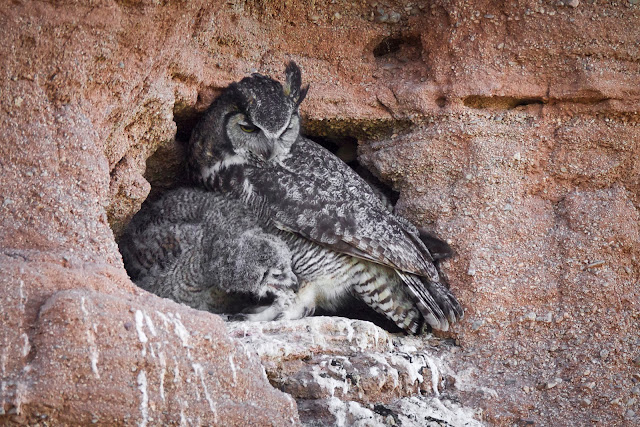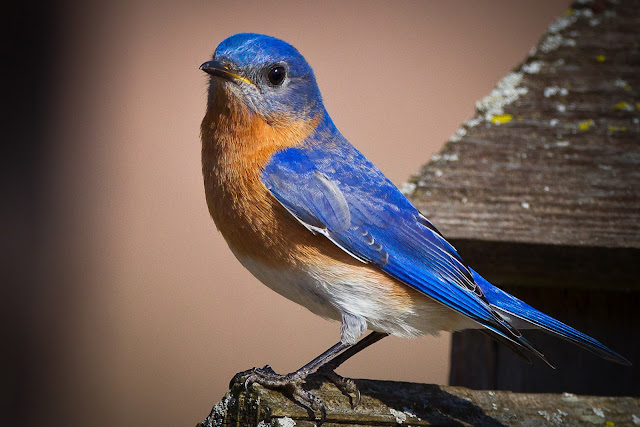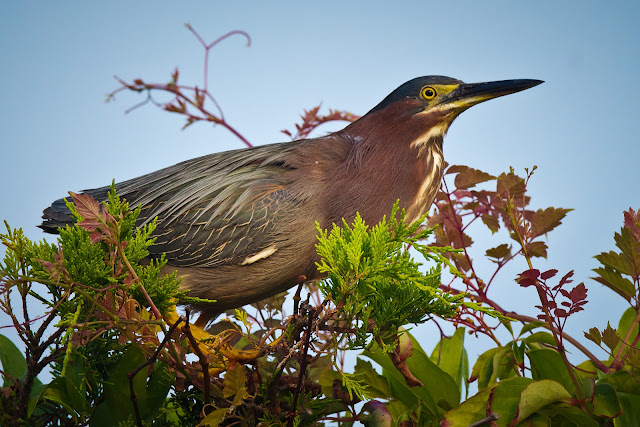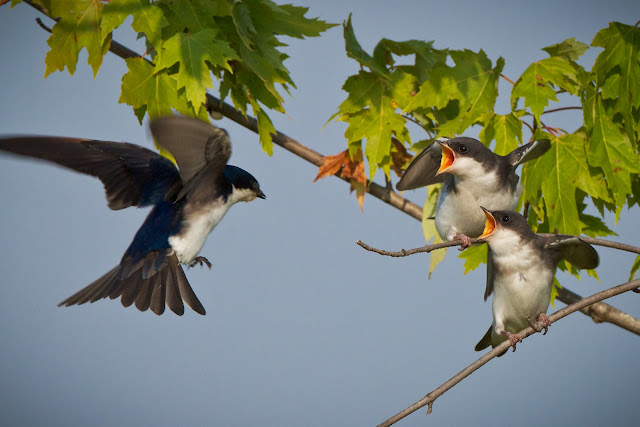I visited the Great Horned Owl’s nest at 6:45AM to find just one owlet resting sleepy-eyed at the entrance.
The adult male Great Horned Owl was standing guard, a hundred yards away, on his usual perch.
I watched the lone nestling nod for fifteen minutes. He was so sleepy! It’s understandable though, given the hour.
He’s young and he’s an owl, it’s late.
But looking around I saw the female, wide-eyed and awake behind me in a tree. She looked a lot more exciting!
She was an impressive bird; fully lit by the rising sun and
framed by the tree. Every soft feather
was in place and she was flashing three-inch long nails. She was gorgeous! That assumes you like a female who can turn
her head 360 degrees.
Suddenly she focused on something in the distance and stretched
her neck upward to see it. She did
four or five neck extensions each time rising a little higher, as if something she
saw out there was passing out of sight. When she was sufficiently certain it was something good to
eat she went after it.
On her way she flew past me, but so gently I didn’t hear a wing
beat.
I swung around 180
degrees to catch her arrival at the nest, but she beat me. She was already standing
at the entrance when I got into position.
Not only that, she had a pack rat in her mouth now too. She is
amazing! It took her about ten seconds
to spot, capture and deliver dinner to the family.
After resting briefly at the entrance she turned to call the kids to dinner! All three came forward. One chick was especially hungry; he
chewed on Mom’s leg feathers in
anticipation.
She
delivers the WHOLE rat to him, no longer torn into little bites or divided equally;
he got it all!
It was a
fat rat too and he struggled mightily as Mom and his brother watch in amazement.
But the rat would not go down…just so far and no farther. He coughed it out time after time.
He kept trying to swallow it, but it was just to big. Mom and brother intently watched this rat-gagging episode for
two and a half minute, according to my camera’s time-stamp.
When Mom
couldn’t take it any longer, she flew off leaving the youngsters to figure it out
for themselves. She joined
the male, who wisely avoided the feeding-the-kids drama all together.
So now, ‘What’s junior to do?’ He has a rat he can’t swallow, a brother who can’t help him and
a Mom who left him! This required
consultation.
He coughed up the rat one more time and consulted with his
brother for advice. They stare at
the dead rat for a full 17 minutes imagining their options.
After much staring and pondering they came up with the only solution they’ve
experienced in their short lives. They lie down on top of it and go to sleep!
Allan
April 21, 2012




























-9491.jpg)





















